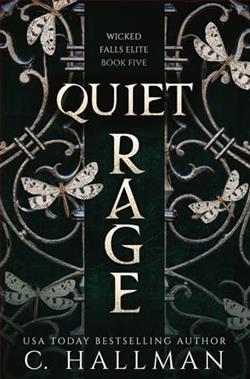Page 1 of Below Grade
MEMORY OF TREES
Trees are linked to neighboring trees by an underground network of fungithat resembles the neural networks in the human brain.- multiple sources
The woods were oddly muted that day. Even the crows and jays who always chatted and back-talked were still for once. It was a concentrated, heavy sort of quiet. The hush of many listening while others took turns speaking. If a human tried to eavesdrop—and most were oblivious to the voice of the forest—they would hear nothing.
A person would hear the wind, the soughing sound of branches rubbing against each other. Maybe the roar of the ocean not far away. But few would ever claim they’d heard the pines, firs, cedars, and hemlocks speaking.
A young crow with sleek black wings and a fuzzy head squawked and fluttered to the ground from its perch on an ancient nurse log. It was hunting the bugs that hid away underneath the bedding of pine needles and Oregon grape leaves. The winged creatures could only be quiet for so long.
This particular conversation had been going on for quite some time now, possibly for decades. But what is time to a thousand-year-old tree? A dark secret, hidden for too long, needed to be exposed. The time had come. Probably had come seasons ago, but exposing it meant great sacrifice. And in the end, the participants could only hope that the right two-legged came along so this concept called justice could be served.
What is justice to a thousand-year-old stand of timber? Perhaps not something the trees understood. But they knewthreatandpuremalevolence. It had walked among them for too long.
Far too long.
The backwoods have their own harsh justice. The unprepared, the weak, the foolish, they will be judged and found lacking. Even the prepared—the strong and the intelligent—can quickly run afoul of forest law. It might seem arbitrary to humans, but humans don’t run this court.
There was only one way to get rid of the poison, and that was to expose the harm it had done so the humans could do their part. The young crow cawed and fluttered up to the lower branch of an ancient Douglas fir, as if it also agreed with the forest’s decree.
Soon. Soon. Soon.
The rising wind riffled through branches and limbs, kissing each one and promising to do its part as it headed further inland. Underneath the forest, the soil—oversaturated from recent rainfall—released its grip on roots deep beneath the surface, roots that had held for centuries. A sort of sigh billowed from tree to tree, like ripples created by a rock tossed into still water.
Further underground, the secret waited impatiently for its turn. It wouldn’t be long now.
MARTIN - SATURDAY
Fact: You can’t throw a rock without hitting another rock.
Martin’s move-in day was almost perfect.
The trip had been easy. They’d had to fight Seattle traffic to get out of the city, but it was pretty smooth after that—so, a typical day trip during a fall weekend when the UW played out of town.
It wasn’t raining. The wind was mild. His closest friend, Simon Elliott, had offered to help him, and even if it meant Simon asking Martin if he was one hundred percent sure about moving every time they paused at a rest stop, the day was still basically flawless. Even if Charley, Simon’s husband, who’d come along to “help,” snorted every time Martin gave his simple answer of, “Yup.” Even if his friends thought he was having a mid-life crisis, the day was almost perfect.
He couldn’t have asked for more.
No, the imperfection—the complication—wasn’t the actual moving, or the cabin he was moving into. It wasn’t the life-changing choice he’d made to uproot himself and leave the city for the Washington coastline. It wasn’t even that he’d spent almost every penny he had available to purchase a rundown motor-resort built in the 1950s.
As one does when they reach their midforties. Nothing to see there.
No, the issue was the ghost.
His attention slid away from the last few boxes stacked in the moving van to the marshy cattail-filled field and then toward the footbridge a couple hundred feet from where he stood.
The body of a local woman had been discovered underneath it only a few weeks ago; she’d been murdered and her remains had been dumped there like unwanted trash. An inconvenience.
A sense of unease rippled through Martin—not a feeling he was comfortable with. The homicides he was familiar with happened during binge watches of his favorite seasons ofLaw and Order. He was a fan of the original, but he also enjoyedSVU.
Technically, the wooden bridge that provided access over the wetlands to the long stretch of sandy beach that made this part of the state famous was part of his property, but locals had long used the path and Martin didn’t want to bethatasshole.
The murderer could literally be anyone.
Martin was a geology professor. Or he had been one until recently. He didn’t believe in spirits or an afterlife. When a person died, they were gone forever. Scientific fact was the cornerstone of his life.
And yet.
And yet he couldn’t shake the feeling that Lizzy Harlow’s ghost was hanging around, waiting for someone to right the wrong done to her. The cops sure hadn’t been able to do much. Cooper Springs had a tiny police force and no medical examiner or nearby lab to prioritize processing any evidence found.















